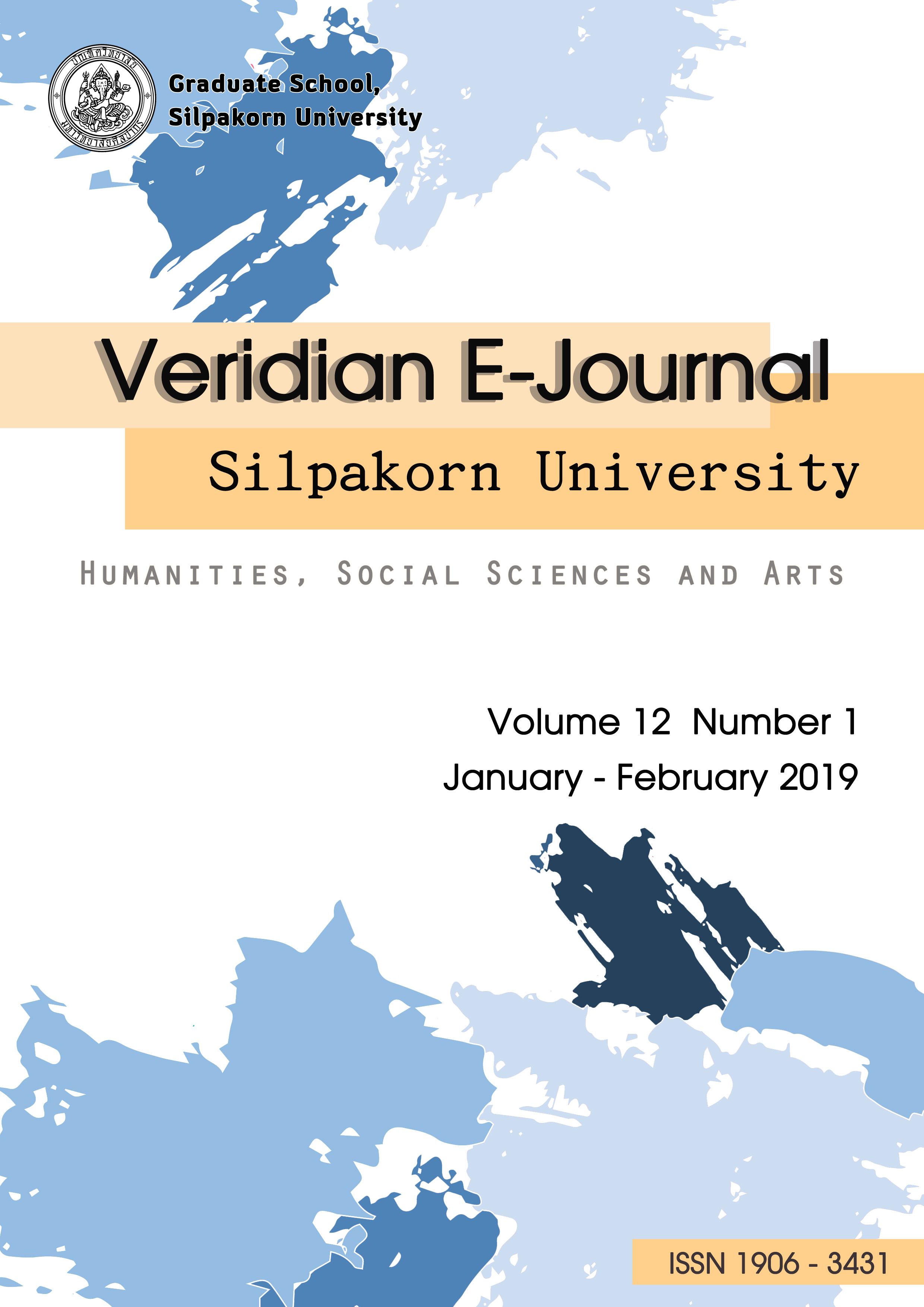การพัฒนาครูมืออาชีพเพื่อส่งเสริมการใช้งาน ICT อย่างสร้างสรรค์ในชั้นเรียน (Development of Professional Teachers to Promote Creative Use of Information and Communication Technology in Classrooms)
Main Article Content
บทคัดย่อ
การวิจัยครั้งนี้เป็นการวิจัยเชิงปฏิบัติการที่มุ่งขยายผล และต่อยอดกระบวนการวิจัยในครั้งก่อนที่ได้พัฒนาแบบจำลองเพื่อไปจัดกิจกรรมเชิงปฏิบัติการแบบมีส่วนร่วมให้กับครูผู้สอนในสถานศึกษาสังกัดเขตพื้นที่การศึกษาของสำนักงานคณะกรรมการการศึกษาขั้นพื้นฐาน (สพฐ.) ซึ่งครั้งนี้ได้นำมาขยายผลไปยัง “ครูมืออาชีพ” ให้มี การนำนวัตกรรม และเทคโนโลยีสารสนเทศและการสื่อสาร (ICT) มาใช้เพื่อการบูรณาการการเรียนการสอนให้กับผู้เรียนได้อย่างสร้างสรรค์ในชั้นเรียน ซึ่งมีการเก็บข้อมูลทั้งเชิงปริมาณ และเชิงคุณภาพกับกลุ่มเป้าหมาย ได้แก่ ครูผู้สอน และผู้เรียนในสถานศึกษาสังกัดเขตพื้นที่การศึกษาของสำนักงานคณะกรรมการการศึกษาขั้นพื้นฐาน (สพฐ.) ทั้งนี้มี 4 ขั้นตอนในการส่งเสริมการใช้งาน ICT อย่างสร้างสรรค์ในชั้นเรียน ดังนี้ ขั้นตอนที่ 1 ตระหนักรู้ เลือกสรร เท่าทัน ICT: ICT Literacy ขั้นตอนที่ 2 รอบรู้ เชี่ยวชาญ ชำนาญ ICT: ICT Expertise ขั้นตอนที่ 3 ออกแบบผลงาน บูรณาการสร้างสรรค์: ICT Creativity และขั้นตอนที่ 4 นิเทศติดตาม ชี้แนะประเมินผล: ICT Evaluation
ผลการวิจัยพบว่า 1) ทักษะการบูรณาการเรียนการสอนกับ ICT ของครูผู้สอนก่อน และหลังการเข้าร่วมกิจกรรม มีความแตกต่างกันอย่างมีนัยสำคัญทางสถิติที่ระดับ .05 2) คุณภาพผลการออกแบบแผนการจัดกิจกรรมการเรียนการสอนแบบบูรณาการอย่างสร้างสรรค์ด้วย ICT อยู่ในระดับคุณภาพดี (คะแนนเฉลี่ยรวม 23.73 คิดเป็นร้อยละ 65.92) และ 3) ความคิดเห็นของผู้เรียนที่มีต่อกิจกรรมการใช้งาน ICT อย่างสร้างสรรค์ในชั้นเรียน มีความพึงพอใจในระดับ มาก ( = 2.61, S.D. = 0.50)
This research was an action research that aims to expand the results and to extend the research process prior to the development of a model for participatory action training for teachers in educational institutions under the Education Service Area of the Office of the Basic Education Commission (OBEC). This has been extended to "Professional teachers" to bring innovation and information and communication technology were used to integrate classroom instruction into the classroom creatively. It contains both quantitative data and qualitatively with the target groups include teachers and learners in educational institutions under OBEC. There are four steps to promote creative use of information and communication technology in classrooms composed of: (1) ICT Literacy (2) ICT Expertise (3) ICT Creativity and (4) ICT Evaluation.
The research findings indicated that: 1) There were significant differences between the skills of integrating teaching and learning with information and communication technologies pretest and posttest scores at the .05 level. 2) The quality of design the creatively integrated lesson plans with ICT has been assessed at a high level (average score = 23.73 percentage = 65.92). 3) The students' opinions on the activities of using information technology and creative communication in classroom showed that was high level ( = 2.61, S.D. = 0.50).

